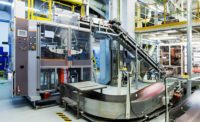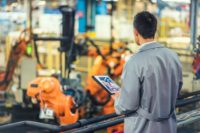Given the nature of manufacturing, taking conscious steps to ensure the safety of your employees is absolutely necessary. The top performers of the industry focus on workplace safety the most, and conduct regular inspections and audits to ensure the safekeeping of both their employees and resources.
Additional attention to safety isn’t just an elite practice. Investing in the environment, health, and safety (commonly called EHS) actually saves time and money as it is simply easier and cheaper than dealing with the consequences of an accident. In manufacturing, things like keeping costs down or dealing with supply chain disruptions, often take the front wheel. As a result, the safety side of it starts to feel like a drain on company time and resources.
However, as you’re about to see in this article — safety in manufacturing is simply not negotiable.
The importance of manufacturing safety
Workplace safety allows employees to do their work with little to no worries about getting hurt. While there are plenty of personal steps one can take to avoid workplace hazards in manufacturing, the management does most of the heavy lifting.
So, before we get into what you can do to improve your approach to safety, let’s take a look at why it is important in the first place.
Manufacturing plants are high-risk environments
In manufacturing, there are increased risks due to the machinery-heavy nature of the plants. The use of raw materials and engineering equipment makes manufacturing plants rather high-risk environments. Tasks such as welding and assembling can easily lead to accidents if workers don’t take the right measures and if they aren’t trained the right way. Some of the most common workplace hazards in manufacturing are:
- Slips and falls
- Improperly installed safeguards
- Injuries from powered industrial equipment
- Electrical hazards
- Accidental start-ups/energy discharges
- Legal safety requirements
OSHA, the Environmental Protection Agency, and others, mandate that companies keep their workers safe. Not following said obligations comes with penalties and legal fees. Any sound manufacturing plant should strive to avoid these. In fact, OSHA guidelines are actually quite a useful resource that gives direction to your safety approach.
Cost avoidance
Safety in manufacturing does more than just save lives — not investing in safety is simply costlier than the alternative. In the event of an unfortunate work hazard, some of the many expenses that companies might need to bear are:
- workers’ compensation
- costs of fixing or replacing broken or damaged equipment
- regulatory penalties
- legal fees
Reasons like these are why the top performers of the industry do not compromise on safety-related investments. The best course of action for avoiding these costs is being proactive and taking preventive inspections and measures.
Improving safety in manufacturing
In manufacturing, strong attention should be paid to assessing risks and then deciding upon a course of action. Usually, you’ll need to come up with both a short-term and a long-term plan of action.
For example, if your plant requires a lot of loading and unloading by hand, the short-term plan of action might mean choosing the people with the most appropriate training for the job. The long-term plan may involve providing assistance to the workers by investing in forklifts.
Here are some other ways you can improve the safety in your manufacturing plant:
- Optimize plant design and layout
- Strategically upgrading plant design and layout can do wonders for the overall safety of your plant. Keeping work areas and emergency exits clear gives employees reasonable room to carry out their jobs. A decluttered workspace also ensures that shutoffs and other essential controls are easily accessible.
- By properly storing hazardous, toxic, or flammable materials, you can further optimize your plant design. Consider using effective ventilation and tools like industrial vacuums, air quality monitors, and dust sensors.
Take measures to prevent slips and trips
Occupational fatalities attributed to slips, trips, and falls accounted for 17% (805 of 4747 cases), according to a Bureau of Labor Statistics news release from 2020. So what exactly can you do to make sure that your manufacturing plant is free from these hazards?
Anti-slip flooring is a common solution that facilities use often, usually if they frequently use liquids. To prevent slips, trips, and falls in your plant, you may:
- Clean up any spills
- Use drip pans and guards
- Make sure there are no holes, loose boards, or nails projecting from the floor
- Replace damaged flooring
- Consider installing anti-slip flooring
- Wear personal protective equipment (PPE)
- Though PPE a particular plant requires may vary, safety gear is an indubitable requirement in manufacturing facilities. To improve the overall safety within the plant, managers should:
- Provide PPE to all employees on-site
- Train the employees exhaustively on PPE usage
- Make sure that the employees are actually using the protective gear by regularly observing the on-the-floor culture
Safety is a necessity, not a liability
In manufacturing, it is pretty much impossible to function without the right safety practices in place — be it the overall risks of a manufacturing plant or the legal obligations of a manager. Invest in the proper gear for your employees, switch up your floors’ layouts to suit your needs better, and express an overall regard for the safety of your employees. This not only saves lives and money but also boosts employee morale to the point that the results may even surprise you.



